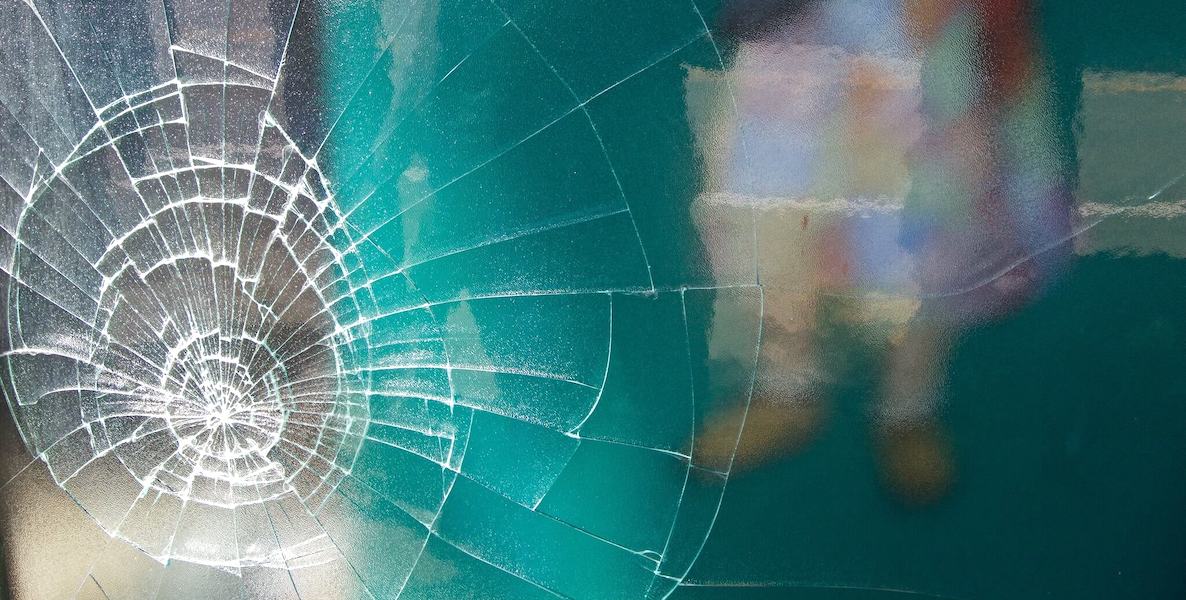If the man who fell to earth in the David Bowie science-fiction film 1976 had fallen in real-time onto the 52nd Street corridor in West Philadelphia, or along Aramingo Avenue in the city’s Riverwards neighborhood days before the 2020 U.S. election, he would have seen a devastated landscape of vandalized businesses.
Curious about this bleak scenery, the visitor would be told—if anybody were to peek out of their homes or businesses—that it was generated by people who identify with political party B, which is opposed to political party A, or the party in power up for reelection.
Had Outlaw been looking closely, she would have seen that Aramingo Avenue was one of those powder kegs.
There’s every reason to suppose that the visitor would then assume that party A stood for law and order and therefore deserved to win any election, presidential or otherwise.
The visitor would not be wrong, of course.
Anyone who surveyed the damage along Aramingo Avenue in Port Richmond the day after the October riots would have seen ransacked storefronts, shattered glass and piles of stolen and discarded merchandise.
In the mini-malls along this mixed shopping district, many “injured” buildings would come into view: a Fine Wine and Good Spirits shop trashed, its ‘spirits’ stolen to further intoxicate the makers of this madness. Visible also would be outdoor trash receptacles looking every bit like miniaturized versions of the remains of the Twin Towers after 9/11. Nearby, dozens of rain-soaked sneaker boxes decomposing on the concrete, their contents long emptied out by looters who arrived in the area by the carloads, and who far outnumbered the police.
Aramingo Avenue is now the city’s “go-to” rioting spot. Ironically, the area was not on Police Commissioner Danielle Outlaw’s “watch list” after Walter Wallace Jr. was shot by police officers after having charged at them with a knife.
Hard hit by the June riots after George Floyd’s murder in Minneapolis, it is difficult to understand how Outlaw did not foresee that the Avenue was ripe for another round of lawlessness.
Join us at our festival Want police reform solutions?
Real Philadelphians knew what was in the cards. Outlaw’s misfire in this regard gave the looters—more than 1,000 of them—a “Do What Thou Wilt” card, enabling them to out-maneuver the law, as well as inflicting 23 injuries on police as they threw rocks, bricks and even blood on officers.
Neighborhood residents now had to pay for the actions of the looting anarchists, including having to deal with a nightly curfew called by the mayor.
Immediately after the June riots, Outlaw attacked the perception that the police were handling rioters with velvet gloves. “What you’re seeing across the country right now,” she said, “is unlike any of us have seen. We have been sitting on a powder keg for quite some time and it has burst. Anyone who says we have control of an unknown situation is just flat-out arrogant. We don’t know what we’re going to be dealing with and it continues to unfold each and every day.”
Had Outlaw been looking closely, she would have seen that Aramingo Avenue was one of those powder kegs.
About Broad + LibertyRead More
The nightly curfews called by Mayor Kenney, in addition to the sound of police helicopters and sirens blaring far into the night for three days straight, gave my neighborhood an England-during-the-Blitz feeling. It was not pleasant and it is not something that I ever wish to live through again—although I somehow suspect I will.
October’s riots did not trash my immediate neighborhood, perhaps because many businesses preemptively walled themselves in with plywood, most closing early, including a major bank (that also cut off ATM access). This move inconvenienced thousands of residents who suddenly found themselves in the throes of a major commercial lockdown. Neighborhood residents now had to pay for the actions of the looting anarchists, including having to deal with a nightly curfew called by the mayor.
Today, as I walk the streets near the mini-malls of upper Aramingo Avenue and pass Santander Bank’s blown-up ATM machine, or ponder the parking lot where looters had scattered pharmaceutical supplies after raiding a Rite Aid, or observe the smashed-up drive-through section of the Panda Express restaurant, or consider how looters not only trashed the local Walmart but went the extra mile by breaking the store’s water pipes and flooding the property, I think of Philadelphia’s future, and how a city like ours can be saved from itself.
Thom Nickels is a Philadelphia-based author and journalist, who has written 15 books, including: Out in History, Philadelphia Mansions, Literary Philadelphia, and the recently released From Mother Divine to the Corner Swami: Religious Cults in Philadelphia. Nickels has written extensively and is currently a regular columnist for City Journal New York, the Philadelphia Irish Edition and the Philadelphia Free Press.
Header photo by Jason Jacobs / Flickr





